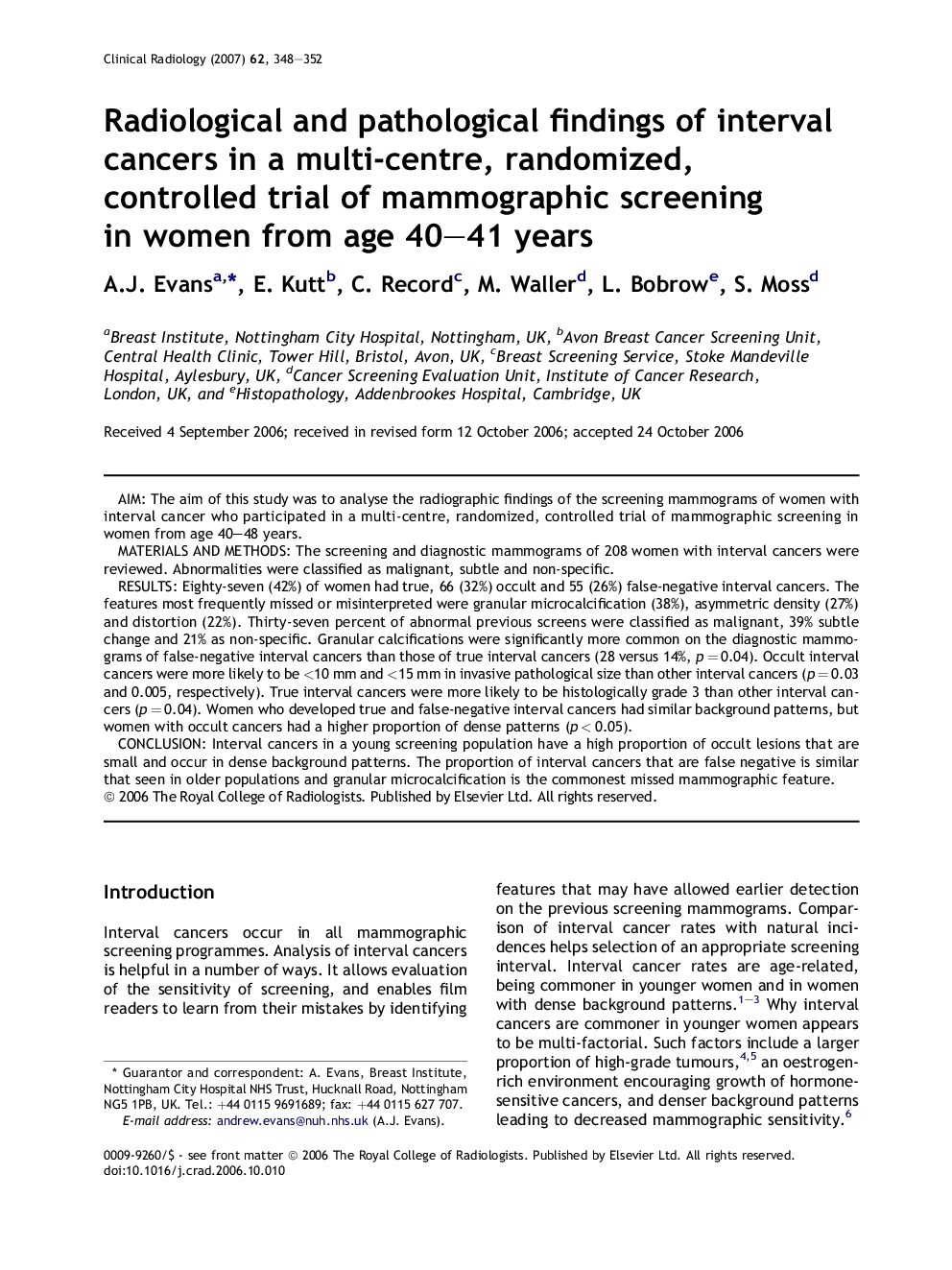| Article ID | Journal | Published Year | Pages | File Type |
|---|---|---|---|---|
| 3983445 | Clinical Radiology | 2007 | 5 Pages |
AimThe aim of this study was to analyse the radiographic findings of the screening mammograms of women with interval cancer who participated in a multi-centre, randomized, controlled trial of mammographic screening in women from age 40–48 years.Materials and methodsThe screening and diagnostic mammograms of 208 women with interval cancers were reviewed. Abnormalities were classified as malignant, subtle and non-specific.ResultsEighty-seven (42%) of women had true, 66 (32%) occult and 55 (26%) false-negative interval cancers. The features most frequently missed or misinterpreted were granular microcalcification (38%), asymmetric density (27%) and distortion (22%). Thirty-seven percent of abnormal previous screens were classified as malignant, 39% subtle change and 21% as non-specific. Granular calcifications were significantly more common on the diagnostic mammograms of false-negative interval cancers than those of true interval cancers (28 versus 14%, p = 0.04). Occult interval cancers were more likely to be <10 mm and <15 mm in invasive pathological size than other interval cancers (p = 0.03 and 0.005, respectively). True interval cancers were more likely to be histologically grade 3 than other interval cancers (p = 0.04). Women who developed true and false-negative interval cancers had similar background patterns, but women with occult cancers had a higher proportion of dense patterns (p < 0.05).ConclusionInterval cancers in a young screening population have a high proportion of occult lesions that are small and occur in dense background patterns. The proportion of interval cancers that are false negative is similar that seen in older populations and granular microcalcification is the commonest missed mammographic feature.
